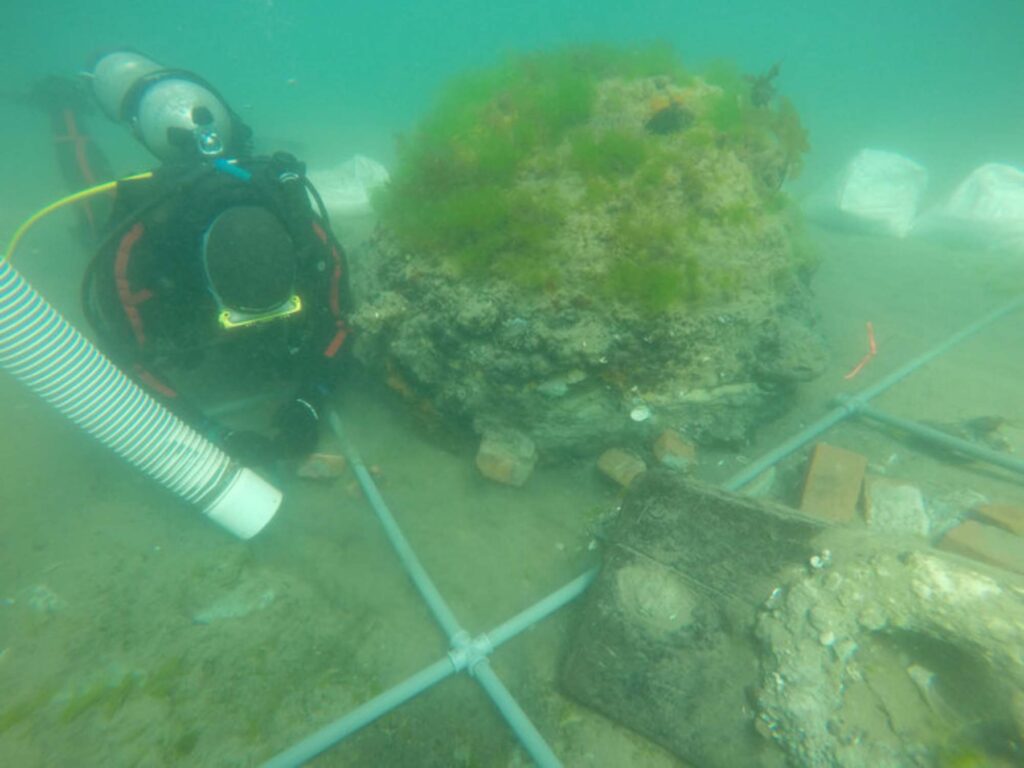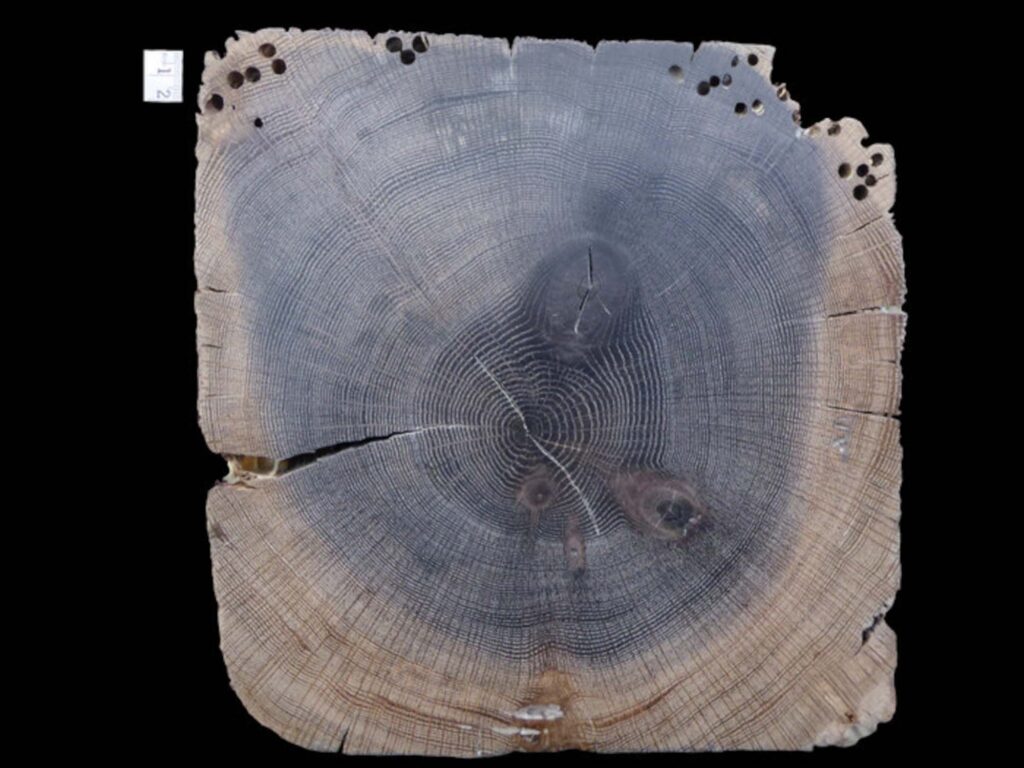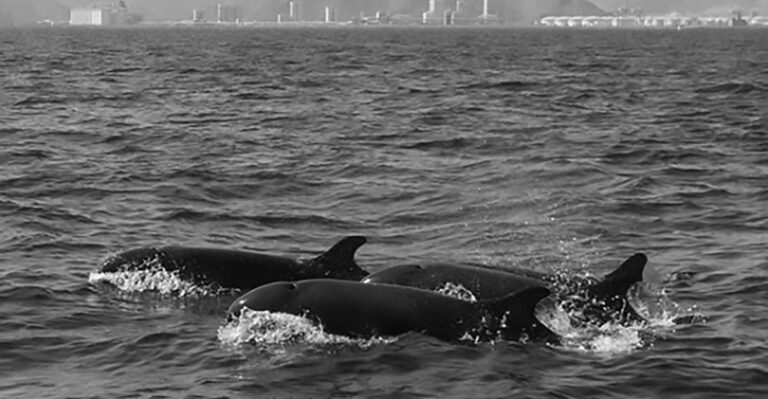A shipwreck has been finally identified as a whaler lost more than 160 years ago after scientists analysed TREE RINGS in the rotting timber.
The rings revealed the wreckage off the coast of Argentina are the remains of the Dolphin, an American whaling ship lost in 1859 some 10,000 miles from home.
Archaeologists have spent years researching the ship’s origin without making a definitive identification.
However, a new analysis of tree rings in its timbers by a team of Argentinian and American researchers, published in the journal Dendrochronologia, may finally have solved the mystery.
Lead author Professor Ignacio Mundo, of Argentina’s Laboratory of Dendrochronology and Environmental History, said: “I cannot say with 100 per cent certainty, but analysis of the tree rings indicates it is very likely that this is the ship.”
Prof. Mundo and scientists at the Columbia Climate School’s Lamont-Doherty Earth Observatory used a huge database of rings from old North American trees to show that the timbers were felled in New England and the south eastern United States just before the ship was built in 1850.
Other evidence includes artefacts found near the wreck, and historical accounts from Argentina and Warren, Rhode Island, the Dolphin’s home port.
Co-author Doctor Mukund Rao, a Columbia tree-ring scientist, said: “It’s fascinating that people built this ship in a New England town so long ago, and it turned up on the other side of the world.”

New England was a major player in the global whaling trade from the mid-1770s until the 1850s, when oil extracted from blubber was popular for lighting and lubrication, and whale bone was used in many small household items now made from plastic.
Hundreds of American ships roamed remote regions, often on voyages that lasted for years. The industry faded in the 1860s after whale populations were decimated, and petroleum came in.
Warren local historian Walter Nebiker believes the Dolphin was built between August and October 1850, of oak and other woods.
Normally trees were felled in cold weather a year or so before a ship was built, which in the Dolphin’s case would have been between late 1849 and February 1850.
Measuring 111 feet long and weighing 325 tons, the Dolphin was launched on November 16, 1850, and Mr Nebiker described her as “probably the fastest square-rigger of all time.”
The ship sailed across the Atlantic and Indian oceans for nearly two-and–a-half years, returning laden with oil in March 1853.
Later trips took her to the Azores and around the Horn of Africa to the Seychelles, Zanzibar and Australia.
Her last voyage started from Warren on October 2, 1858. The ship ended up off Patagonia a few months later.
A letter to the owners from her master, a Captain Norrie, said she was destroyed when she “lay upon the rocks in the southwestern part of New Bay” – an apparent reference to the Golfo Nuevo, one of Patagonia’s few good natural harbours, where whalers were known to anchor. The crew would have sailed some 10,000 miles to get there.
There was no permanent European settlement in the Golfo Nuevo until 1865, when Welsh immigrants started what is now the small city of Puerto Madryn.
Local tradition has it that early settlers scavenged material from one or more shipwrecks, but it is unclear whether this was from the Dolphin or another ill-fated ship.
Shifting sediments revealed the partial remains in 2004 of a wooden vessel in the intertidal flats just off Puerto Madryn. Locals knew it was there, but scientists had not.
In 2006 and 2007, marine archaeologists excavated the remains during low tides. They also documented several other wrecks nearby.
About all that was left of the ship was some of the lower futtocks, or ribs, and some hull and ceiling planking.
Researchers determined that the ship was built probably in the 19th Century, mainly of oak and pine from the Northern Hemisphere. But of what species and whether European or North American origin, they could not tell.
With little else to go on other than some brass nails and a single leather shoe, they speculated it could have been a fishing or merchant vessel – or a whaler.
Other evidence eventually turned up. Two iron cauldrons and the remains of bricks were found near the wreck, suggesting a shipboard “try-works” for boiling down blubber.
Researchers also discovered that Argentine mariner Luis Piedrabuena had rescued 42 members of the Dolphin’s crew.
The Dolphin appeared in Lloyd’s marine insurance register as having come from Warren. The researchers then contacted the Warren Preservation Society, which provided a manuscript by Mr Nebiker and other information.
After processing samplesof wood from the wreck in his lab, Dr Mundo turned to Professor Ed Cook, founder of the Lamont-Doherty Tree Ring Lab, a longtime collaborator with South American colleagues, and pioneer in dendroarchaeology, the science of pinpointing the age and provenance of old wooden structures.
Prof Cook utilised the North American Drought Atlas, a massive database whose creation he spearheaded in the early 2000s.

The atlas collates ring samples from aroundt 30,000 standing trees of many species across the continent going back more than 2,000 years.
Varying rainfall levels create subtle yearly variations in ring width that allow researchers to chart past climates, date trees’ precise years of germination and growth and – in the case of old wooden structures – often where and when trees were cut, since climates vary from place to place, leaving distinct regional signatures.
The dendrochronologists determined that the ribs were made of white oak, many species of which grow in the northeast United States. The hull and ceiling planks, they could tell, were old-growth yellow pine, forests of which once covered much of the region.
Wooden nails holding things together were made of rot-resistant black locust, widespread across many eastern states of the US.
Analysis of the oak rings showed that some of the timbers came from trees that had sprouted as far back as 1679. The outermost rings indicated the oaks had been cut in 1849, exactly coinciding with the Dolphin’s 1850 construction.
Most of the pine samples matched well with chronologies taken decades ago from living trees in Alabama’s Choccolocco Mountain and Georgia’s Lake Louise areas, both known for exporting massive amounts of pine to the northern states in the 19th Century.
The researchers couldn’t say if the planks came from those sites specifically, but the signatures indicated that they must have come from somewhere in Alabama, Georgia or northern Florida.
The rings from the oak ribs most closely resembled chronologies taken from old trees growing in Massachusetts. The rings’ very narrow widths indicated the trees had grown in dense, old-growth forest -most of which was cut down in New England in the first half of the 19th Century as loggers swept through. Many of the Massachusetts oaks undoubtedly ended up in the shipyards of next-door Rhode Island.
The new paper still hedges its bets, saying the ship may very well be the Dolphin, but in the absence of a unique artefact associated with the vessel, it could conceivably be some other American whaler from the same time.
Co-author Doctor Cristian [CORRECT] Murray, of Argentina’s National Institute of Anthropology and Latin American Studies, said: “There were many whaling ships in that area during that time.
“So I don’t like to say it is the Dolphin until we can get more evidence.”
However, Dr Rao says he is completely convinced, adding: “The archaeologists are more conservative – they prefer a slightly higher standard, and I don’t blame them.
“It’s true we don’t have something like the ship’s bell. But for me, the story is there in the tree rings.”
Story By: Simona Kitanovska, Sub-Editor: Martin M Barillas, Agency: Zenger News
The Ananova page is created by and dedicated to professional, independent freelance journalists. It is a place for us to showcase our work. When our news is sold to our media partners, we will include the link here.




